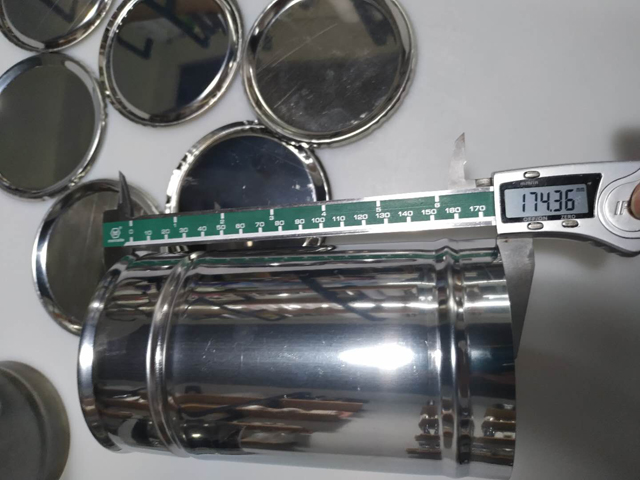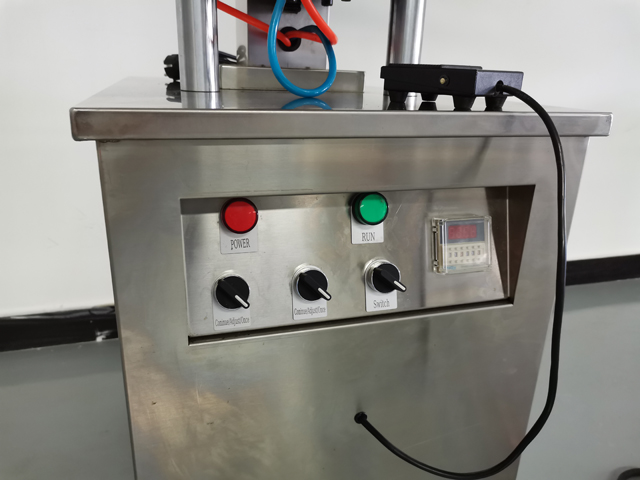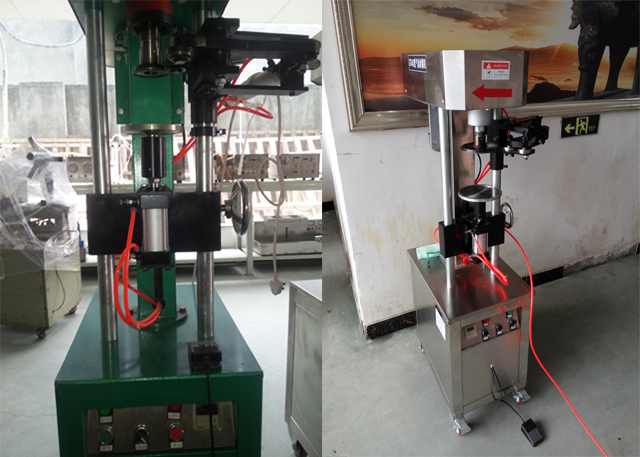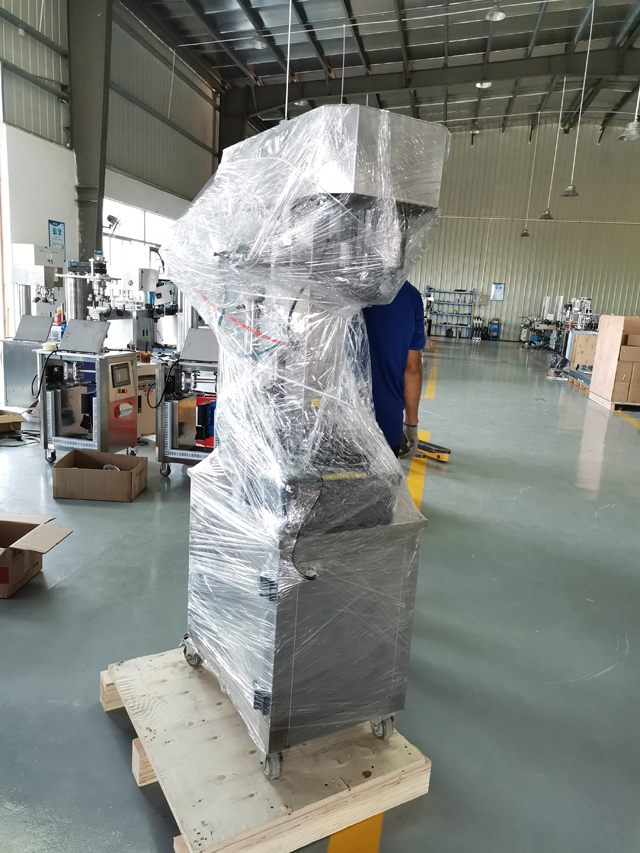

Voltage AC 220v /50 hz 110v / 60 hz/single phase
Power consumption 0.55 kw
Can sealing height 30-320 mm
Can sealing diameter 50-200 mm
Cans thickness 0.20-0.40mm
Operating air source 0.6 Mpa
Capacity 1200-2000 bottles/h
Size 600*660*1450 mm
Weight 140 kg
This product Easy open cans/Metal jars/bottles sealing machine model YX-43AA is applicable to all kinds of tin cans, aluminum cans, plastic containers, paper, cans, and other kinds of round cans sealing, reliable quality, lightweight and easy to operate, the food and beverage industry and other essential ideal equipment.
Features of cans/jars/bottles/metal caps sealing machine model YX-43AA

1. Sealed with sealing ring around, the roll seam sealing, simple structure, easy to adjust
2. Electrical components using Chint low-voltage electrical, reliable performance
3. Tank lift mechanical cam control, lifting stable and reliable
4. Work surface use 304 stainless steel
Technical parameter of pneumatic metal cans sealing machine semi automatic
|
Type |
YX-43AA |
|
Voltage |
AC 220v /50 hz 110v / 60 hz |
|
Power |
0.55 kw |
|
Can sealing height |
30-320 mm |
|
Can sealing diameter |
50-200 mm |
|
Operating air source |
0.6 Mpa |
|
Capacity |
1200-2000 bottles/h |
|
Size |
600*660*1450 mm |
|
Weight |
140 kg |
Cans sealing samples
Wire instruction for cans sealing machinery :
Button-controlling parts for model YX-43AA sealing machine:
Spare parts together with cans seamer shipping:
Two kinds of metal/easy open cans sealing machine(paint-baked/stainless steel) in stock
Why you choose the pneumatic type cans sealer instead of the electric type cans sealer:
The question of whether it’s better to use pneumatic or electric actuators as part of your system design or to purchase equipment featuring one type of actuator or the other does not lend itself to an easy answer. Like many of life’s decisions, the answer to this question typically begins with: “Well, it depends …”
If there is any significant performance differentiator, it is that electric actuators are better known for their high levels of precision. Though this is not to say pneumatic actuators cannot deliver very precise motion. Again, the issue here revolves around how much precision you really need.
For help on this issue, we referred to information as below.
The case for pneumatic actuators
Pneumatic actuators provide high force and speed at low unit cost in a small footprint. As a matter of fact, pneumatic cylinders provide more force and speed per unit size than any other actuator technology except hydraulic. Force and speed on pneumatic actuators are easily adjustable and are independent of each other.
Pneumatic actuators are most economical when the scale of deployment matches the capacity of the compressor. Small compressors are efficient and economical when used to power a small number of pneumatic devices. Large compressors are efficient and economical when powering a large number of pneumatic devices.
While pneumatic component costs are low, maintenance and operating costs can be high, especially if a serious effort has not been made to quantify and minimize the costs. Maintenance and operating costs include replacement cylinder costs, air line installation and maintenance, and electricity for the compressor.
According to the Department of Energy, 24 percent of the annual cost of compressed air is due to maintenance, equipment and installation while 76 percent is due directly to the cost of electricity for the compressor.
The case for electric actuators
In contrast to pneumatics, electric actuators provide precise control and positioning, help adapt machines to flexible processes and have low operating cost. They are most economical when deployed in a moderate scale in processes where their performance advantages can be a benefit and when the electronics are separate from the actuator to segment and minimize replacement costs.
Electric actuators consist of a ball, acme or roller screw connected via a coupler to an electric motor. As the screw turns it moves a piston, which is connected to the rod or carriage. The rod or carriage moves the load. Performance varies depending on materials used.
Commonly used motors for electric actuators include steppers and servos. Brush dc motors and ac motors are sometimes used with limit switches when positioning accuracy is less critical. Step motors are an economical choice for accurate positioning at lower speeds.
However, steppers may lose synchronization with the controller when employed open loop without an encoder or if they are undersized for an application. Servos, by definition, are closed loop and provide superior performance at high speeds, albeit at a higher cost.
High precision screws and anti-backlash mechanics can provide accuracies to ten-thousandths of an inch. Standard precisions with standard components range from a few hundredths to a few thousandths of an inch.
Components of an electric actuator include the mechanical actuator that translates motor rotation to linear speed and thrust, the motor, an electronic driver or amplifier to power the motor, and a controller to control motion.
Operating costs of electric actuators are largely due to motor power draw. Controllers’ and drivers’ low voltage circuitry consumes power to a far lesser degree.
While component costs of electric actuators are high, operating costs are low. High component costs often deter the use of electric actuators because savings in operating costs compared to pneumatics are often not adequately considered or are outright ignored.
Wooden case packaging for metal cans sealing machine before delivery

 Email:
Email: Tel:+8675586718316
Tel:+8675586718316























